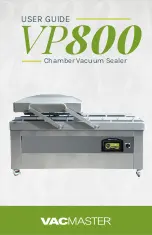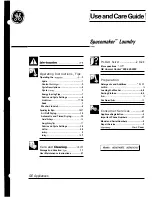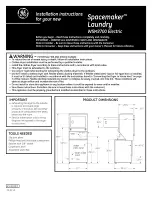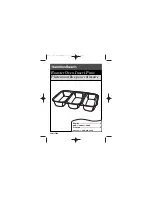
EEH 6200.1
29
Enamel
Oven interior, front, baking trays, drip pan, enamel hobs
Some plastic sponges with abrasive side can be used. Some products do
however contain grains in the abrasive side of the sponge which can cause
scratches. Carefully try out the sponge on a small surface!
F
A cleaning scraper for glass ceramic surfaces is suitable for removing
heavy dirt.
F
To thoroughly clean your appliance we recommend the use of VSR O-
FIX-C. Oven spray may be used -
however not on an enamel hob
.
Stainless steel
Stainless steel door front, control panel, stainless steel hob, telescopic
glide-out shelves (acc. No. 601), backmobil (acc. No. 600A)
[
Stainless steel is very sensitive to scratches!
Do not use a cleaning scraper!
[
Remove any deposits of calcium or any spots of grease, and starch as
soon as possible, or stains will appear!
For the cleaning a cleaning agent for stainless steel can be used.
We recommend to clean once a week stainless steel surfaces with an usual
cleaning agent for stainless steel. This will create a protective film protecting
the stainless steel surface from discolouring.
Glass
Inside of the door – coated glass
[
If possible oven spray should not be used as it can cause the destruction
of the coated glass surface when used frequently.
A cleaning scraper for glass ceramic surfaces is suitable for removing heavy
dirt.
F
To thoroughly clean your appliance we recommend the use of VSR O-
FIX-C or glass detergent.
Door front, control panel
F
Clean the
oven front
with warm water containing a small amount of
detergent, with a damp cloth o a soft sponge. Do not use glass cleaning
agents.
Glass ceramic hob
[
Sugar and food containing sugar (e.g. marmalade) and melted plastic must
immediately be removed with the cleaning scraper from the hot cooking
surface otherwise the surface can be destroyed when cooling down.
First remove heavy dirt and food residues with the cleaning scraper when the
cooking surface is still warm.
Clean the cooled down cooking surface with water and a small amount of
detergent, with a cleaning agent for glass ceramic surfaces or with VSR O-
FIX-C. Wipe off the surface with clear water then dry it thoroughly.
F
Residues of cleaning agents can cause discolouring the next time you
switch it on. Cloths and sponges which are used for the cleaning of other
surfaces can cause discolouring.
F
Cleaning the glass ceramic surfaces with a cleaning agent protects them
of discolouring, and reduces the danger of damage through sugar and
often can remove discolouring or stains.
Aluminium
Door ledges and handles in aluminium, baking tray (acc. No. 543)
[
Aluminium is very sensitiv to scratches and oven spray can cause
damage!
Do not use a cleaning scraper!
Door sealing
F
The door sealing should be removed when cleaning the oven to avoid
that dirt can collect under the sealing. See page 31 “Replacing the door
sealing”.
If necessary the sealing can be cleaned with detergent or washing-up liquid.
Buttons
Clean the buttons with warm water containing a small amount of detergent,
with a damp cloth o a soft sponge.
Removing and installing the ofen door
Removing the oven door
– Open the oven door as wide as it will
go.
– Fold forward the clamps on the door
hinges.
– Take hold of the oven door on the
both sides and close it almost
completely.
– Gently lift the door and pull the
hinges forward away from the door
opening.

































